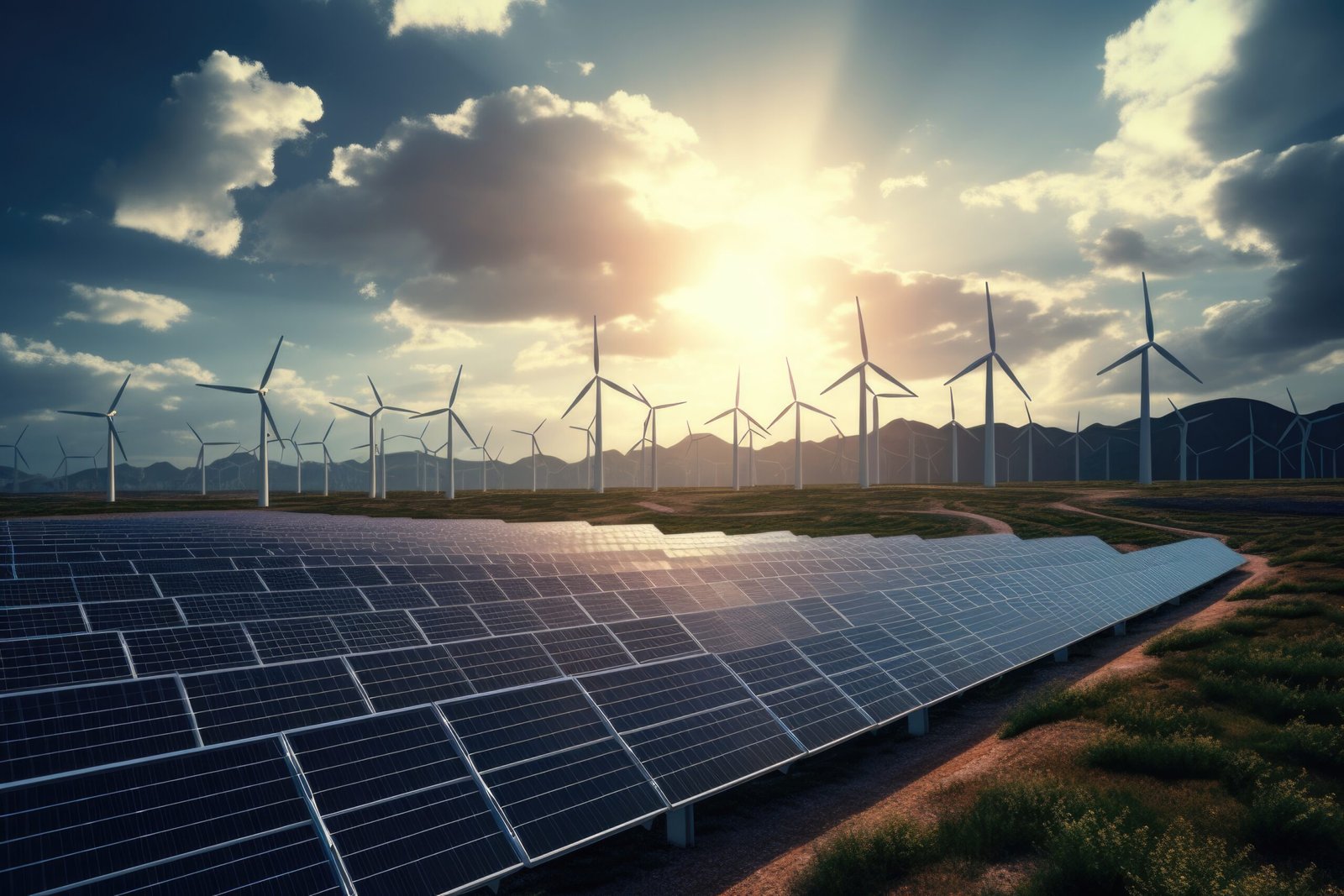In the current and rapidly changing energy landscape, it’s essential to keep up with developments in renewable energy solutions and clean technologies. From clever solar panels to advanced wind turbines, these technologies are kind to the earth and our wallets. With support from governments, new technological breakthroughs, and increasing public awareness, renewable sources of power are becoming accessible and affordable for all. There will always be bumps along the way, but this article is here to explore the latest in green technology.
The adoption of cleaner energy requires effort from individuals, businesses, and governments around the world. The importance of renewable energy cannot be understated in mitigating climate change. These sources of power have a much smaller impact on the environment than fossil fuels do. In fact, when harnessed properly through wind, water turbines or solar panels, we can generate electricity without causing harm to our world.
Renewable energy has other benefits as well. A decentralized network that doesn’t have only one point of failure (like what you’d find at a large coal power plant) makes us less vulnerable to attacks or natural disasters that could cut off our access to electricity. Its variety of forms also lends itself nicely towards economic growth.
There are different types of renewable energy sources that we’ll explore throughout this article, such as solar, wind, and hydroelectricity
latest developments in renewable energy and clean technologies
As the demand for a clean energy supply increases, research in renewable technology has begun to show some promising results. Solar power is one of those technologies that has seen significant improvements in efficiency and affordability. With the creation of thin-film and perovskite cells, solar panels have become more flexible and efficient than ever before, allowing them to be used in many different applications.
Wind power has also seen great strides in the last decade or so. The size and capacity of wind turbines have grown exponentially, giving them the ability to generate much more energy than their predecessors. Offshore wind farms are becoming increasingly popular due to their high wind speeds and minimal visual impact. Not only are they planning to build better offshore turbines, but they’re also trying their hand at floating ones, which could unlock untapped locations.
Hydropower has been considered one of the most sustainable sources of electricity for a while now; however, there is still work that needs to be done to make it 100% safe for aquatic species. Turbines that allow fish to pass through safely are being implemented, as are passage systems in dams themselves. Additionally, energy storage systems such as pumped hydroelectric storage and advanced battery technologies will help stabilize these plants moving forward.
Challenges and barriers in the adoption of renewable energy solutions
Despite all these advancements, some barriers remain in the way of the widespread adoption of green technology. One major issue is the high cost associated with installation and infrastructure investments when compared with traditional sources of electricity. Although prices continue to drop over time, this could hinder potential investors with a limited budget from taking action. Another obstacle would be renewable energies’ unpredictability due to their dependency on weather conditions; however, advancements made in battery storage systems may act as a solution by allowing excess renewable energy to be stored during periods where generation exceeds demand, reducing waste and making sure we never run into situations where there’s not enough power.
On another note, it’s important that we acknowledge that there might not be enough room on the grid to successfully integrate renewable energy sources in certain areas. In cases like these, it is important that governments prioritize the expansion of existing infrastructure to accommodate renewable energy distribution.
Government policies and incentives for renewable energy
To promote the adoption of renewable energy solutions, governments around the world have implemented various policies and incentives. Feed-in tariffs guarantee a fixed price for renewable energy producers, providing financial stability and encouraging investment. Net metering programs allow individuals and businesses to sell excess energy back to the grid, offsetting their electricity bills and incentivizing the installation of renewable energy systems.
Tax incentives and grants are also common approaches to supporting renewable energy development. Governments may offer tax credits or deductions for renewable energy investments, reducing the financial burden on individuals and businesses. Additionally, research and development funding can spur innovation in clean technologies, driving advancements in renewable energy solutions.
Case studies: Successful implementation of renewable energy solutions
Several countries and regions have successfully implemented renewable energy solutions, serving as inspirations and models for others. Germany has made great strides in transitioning to renewables, with over half of its electricity coming from solar power alone. The country’s economy has been able to create a lot of jobs through its feed-in tariff system while simultaneously boasting one of the fastest-growing economies in Europe.
Costa Rica is a shining example of renewable energy success. They have managed to achieve close to 100% renewable electricity generation through hydropower, geothermal energy, and wind power. Not only has this reduced carbon emissions, but it has also helped boost tourism and attract foreign investment.
The future for renewable energy and clean technologies looks promising.
The consistent advancements in solar, wind, and hydropower technology will make them more efficient, affordable, and scalable. As we improve these mainstream technologies, we can also work on emerging ones like tidal energy, geothermal energy, and biomass energy to create a more varied mix.
Energy storage solutions are crucial in creating an infrastructure that works consistently with renewables. So far, our technology can’t create a steady supply if the source isn’t always generating power. However, with the development of advanced batteries and other storage solutions, we’ll be able to ensure a consistent supply even during low-generation periods.
digitalization of the sector will allow for integration between existing infrastructure and new-age renewable sources. Through advanced sensors, automation, and data analytics, we can optimize distribution while improving grid stability and efficiency.
Conclusion: The role of individuals and businesses in promoting renewable energy solutions
The bottom line is that everyone has something they can do to help promote renewable energy solutions. Individuals adopting clean technology or investing in personal systems can reduce their personal carbon footprint. Businesses should lead by example incorporating renewables into operations, which will influence supply chains towards sustainability.
If together we drive demands for renewable technology, then governments won’t have any choice but to support us in transitioning to a brighter, cleaner future for all generations to come

